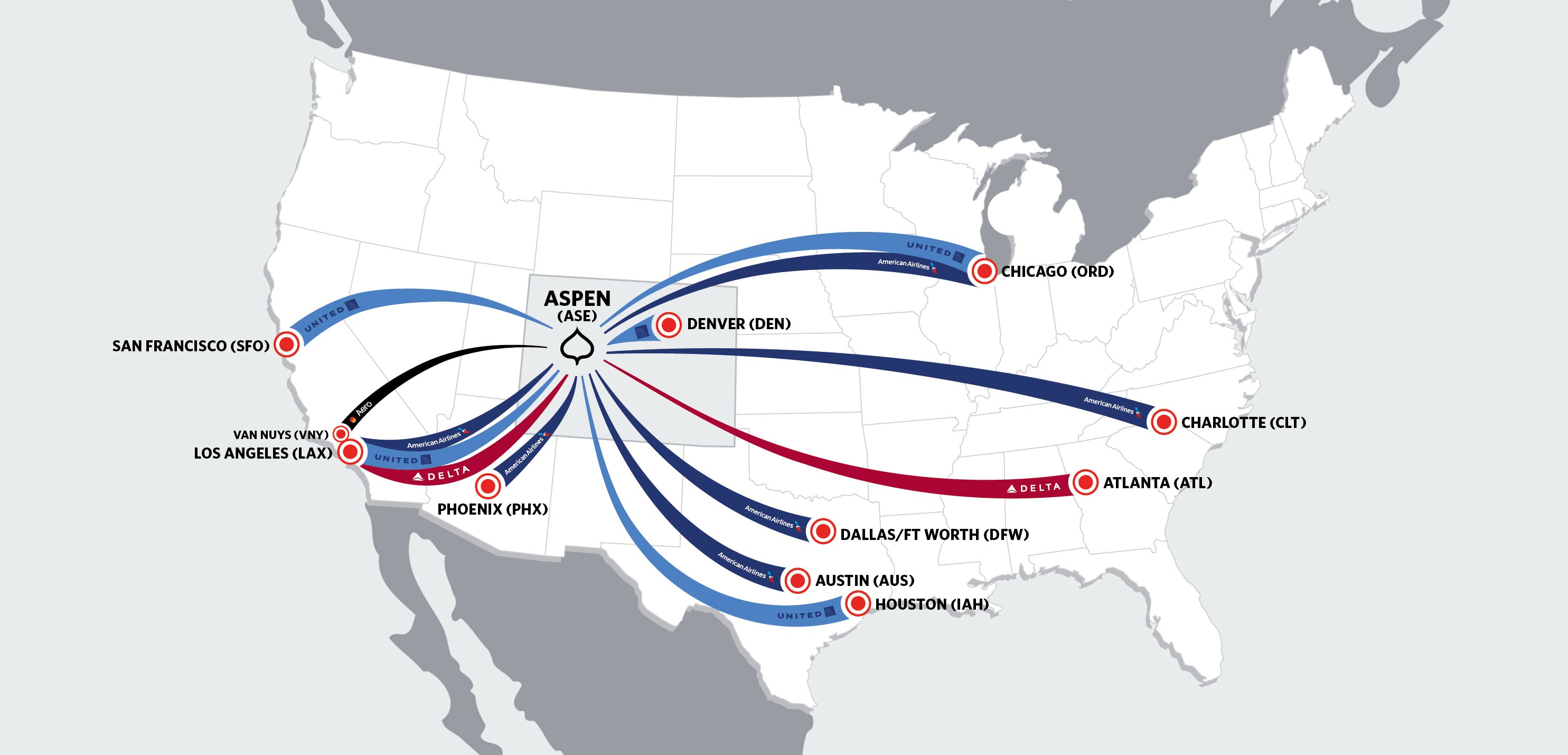American Airlines will launch a new nonstop flight from Charlotte Douglas International Airport (CLT) to Aspen/Pitkin County Airport (ASE) beginning December 19, 2025, with service running through early April 2026. This will be the first-ever Charlotte nonstop to Aspen, making this flight the longest direct route to ASE. Flights will operate Friday through Sunday, increasing access to Aspen and making it easier to ski travel from Charlotte.
This direct flight service will cut down on layovers and time-consuming transfers, placing travelers three miles from downtown Aspen and six miles from Snowmass Village. Travelers will be able to take advantage of faster Aspen travel from Charlotte via a CRJ-700 aircraft, which provides both first-class and main cabin seating. With dozens of one-stop connections through Charlotte Douglas, this new route offers convenient connectivity across the Southeast and East Coast.
The Aspen Chamber Resort Association has welcomed this new air service, noting easier access to fly directly to Aspen, drawing new customers to Colorado’s premier ski town. This route supports not only leisure travelers but also group bookings, event lodging, and those seeking family-friendly vacation rentals in Aspen and Snowmass.
The announcement comes as Delta Air Lines recently expanded service to Aspen from both Atlanta, GA (ATL) and Los Angeles, CA (LAX), highlighting growing national and international demand for Aspen ski resort travel and more optimal winter flight options.

Previous Aspen Airport Upgrades
Over the past decade, ASE has completed major ground‑side projects to enhance safety and passenger experience:
- The runway expansion wrapped up on November 2, 2012, allowing larger aircraft to operate more efficiently
- A new deicing pad was added adjacent to the taxiway, improving winter operations
- A connector taxiway, built in 2012, offers additional routing flexibility for aircraft
- In late November 2013, the gate area renovation included relocating the kiosk and adding bistro seating, gate monitors, new boarding desks, reconfigured seating, and removal of interior obstructions to optimize space
- Drainage and west-side safety improvements were completed to reduce surface runoff
- The terminal roof conduit repairs and fire suppression system upgrade reached final stages following those gate improvements
- An upgraded air traffic control camera system went live in 2011
- A multi-year landscaping plan was adopted to enhance grounds around the terminal
- Construction began on a pedestrian underpass beneath Highway 82, offering safe foot traffic access adjacent to the terminal (ongoing as of 2014)
Plan Ahead with Frias Properties
Take advantage of the new Charlotte to Aspen nonstop flight this winter and reserve your Aspen and Snowmass vacation rentals with Frias Properties. We offer ski in, ski out lodging options close to the slopes and town, plus we offer complimentary airport transfers, concierge service, and housekeeping for qualifying stays. Let our local team get you ready to make the most of your mountain getaway.
Reserve direct with Frias Properties today or call 970‑920‑2010.
